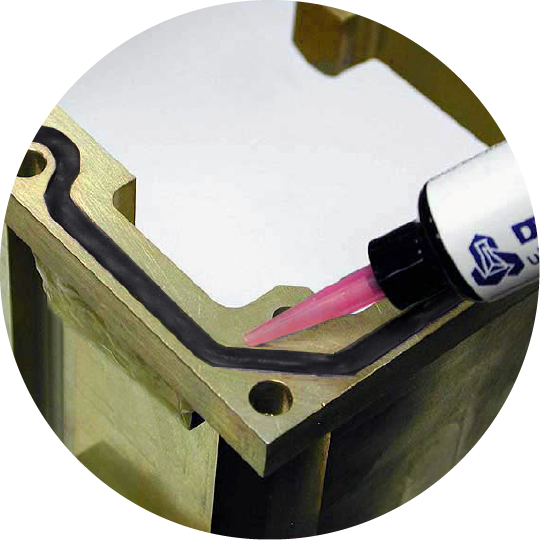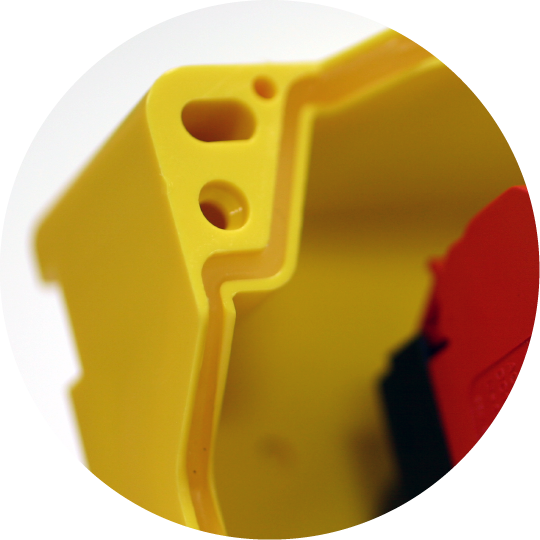Speed of cure for the UV elastomers is compared to traditional form-in-place gasketing materials (Table 1). As shown in Table 1, UV acrylate is the fastest way to produce a FIP/CIP gasket. Material cost and performance of traditional silicones and urethanes have been most commonly used for gasketing applications. Unfortunately, these two materials (silicones and urethanes) cure very slowly which add to the total cost of a manufacturing process. The inability to assemble the components, inspect the assembly, or perform quality control testing until the gasket is fully cured, adds further expense. Should the component be touched prior to full cure, the gasket will be permanently deformed resulting in a defective assembly.
Aside from slowing the process, silicones can release corrosive by-products during cure that can affect product durability of electrical circuits. The two-part urethanes present manufacturing issues because they are moisture sensitive, require exacting ratios, and air-free mixing. UV silicones also present assembly issues due to the amount of time needed for the bead of material to fully cure. This chemistry cures quickly on the surface but full depth of cure is not achieved without additional heat or moisture cure mechanisms. Hot melts cure quickly but require a significant capital investment and are not practical for small-volume applications or any thermal applications.
Table 1. Comparison of Cure Times of FIP Gasket Materials
| Gasket Chemistry |
Time to Skin Over |
Time to Full Cure Under Ambient Conditions |
| UV Acrylate | Seconds | Seconds |
| Air-Dry Silicone | Minutes to Hours | Hours to Days |
| 2-Part Urethane | Minutes to Hours | Hours to Days |
| UV Silicone | Seconds | Hours to Days |
| Hot Melts | Seconds | Minutes |


